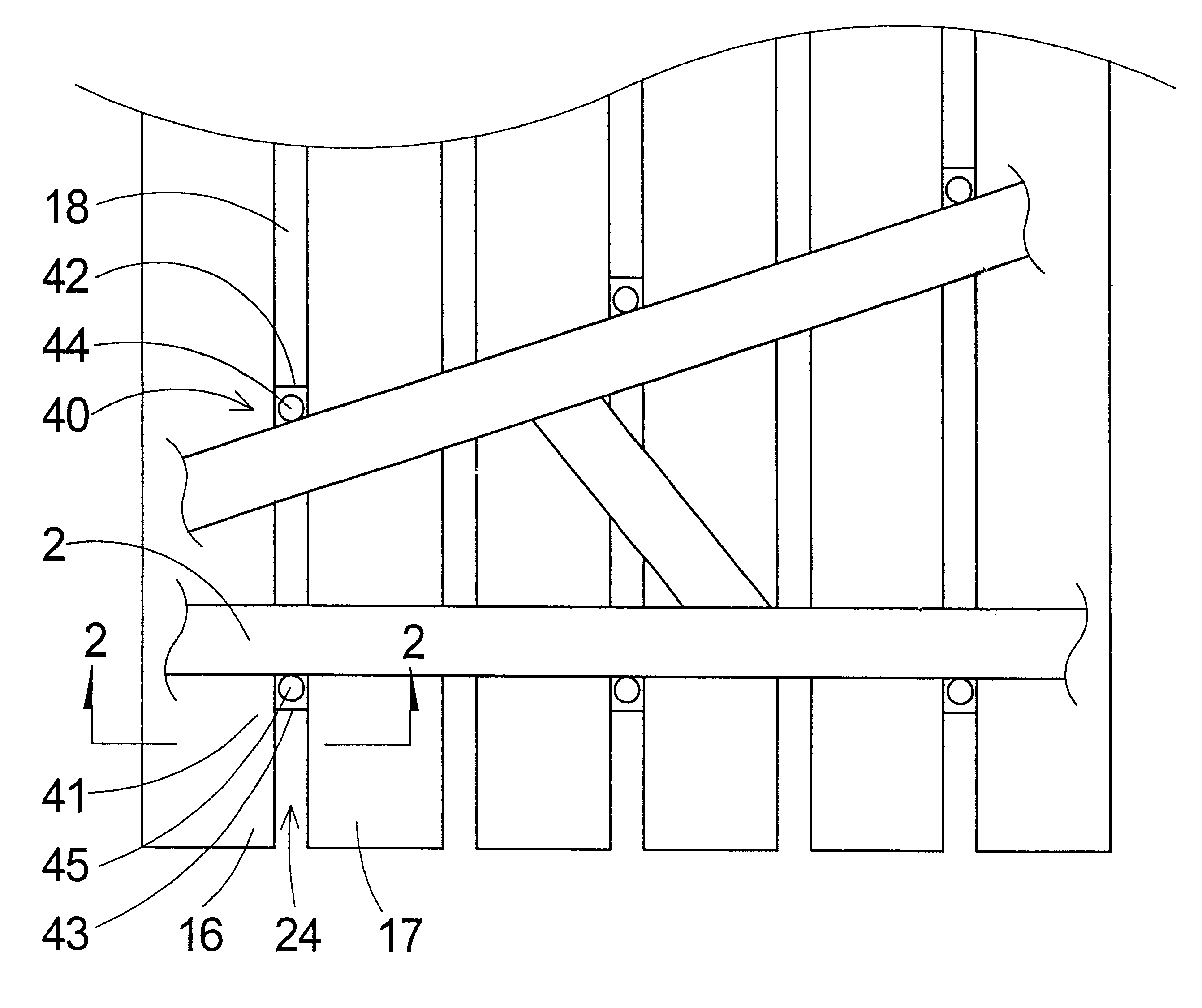Automatic truss jig setting system
a technology of automatic truss jig and setting system, which is applied in the field of jig systems, can solve the problems of less time saving and reliable, relatively expensive projection equipment and associated controlling system, and dust in the environment in which the jig system is used,
- Summary
- Abstract
- Description
- Claims
- Application Information
AI Technical Summary
Problems solved by technology
Method used
Image
Examples
Embodiment Construction
With reference now to the drawings, and in particular to FIGS. 1 through 8 thereof, a new automatic truss jig setting system embodying the principles and concepts of the present invention and generally designated by the reference numeral 10 will be described.
As best illustrated in FIGS. 1 through 8, the truss jig positioning system 10 of the invention may suitably be employed on a table 12 that has and defines a support plane 14 on which work pieces or building elements (such as wood boards or other building materials) are supported in proper position for forming a structure such as a support truss for a roof of a building. The table 12 may comprise a plurality of segments 16 that have upper surfaces 15 that substantially lie in and define the support plane 14 of the table. The upper surface of each of the segments may be substantially planar, and a plane of the segments may be oriented substantially horizontal.
The segments 16 of the table are separated by slots 18, and preferably e...
PUM
| Property | Measurement | Unit |
|---|---|---|
| movement | aaaaa | aaaaa |
| time | aaaaa | aaaaa |
| time period | aaaaa | aaaaa |
Abstract
Description
Claims
Application Information
 Login to View More
Login to View More - R&D
- Intellectual Property
- Life Sciences
- Materials
- Tech Scout
- Unparalleled Data Quality
- Higher Quality Content
- 60% Fewer Hallucinations
Browse by: Latest US Patents, China's latest patents, Technical Efficacy Thesaurus, Application Domain, Technology Topic, Popular Technical Reports.
© 2025 PatSnap. All rights reserved.Legal|Privacy policy|Modern Slavery Act Transparency Statement|Sitemap|About US| Contact US: help@patsnap.com



